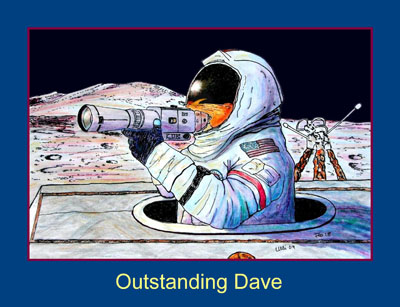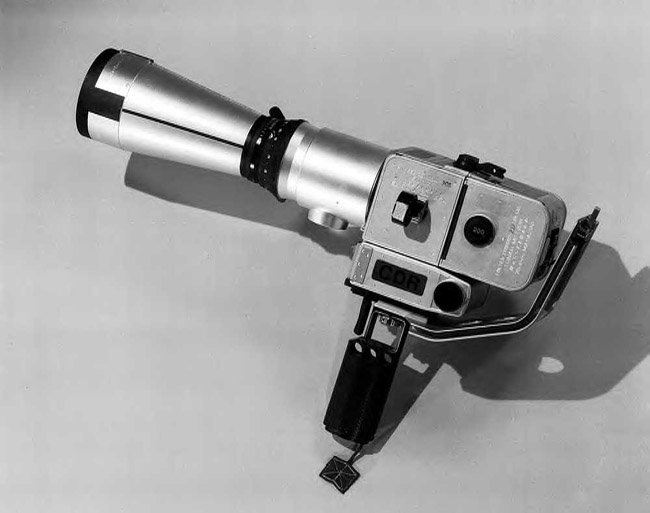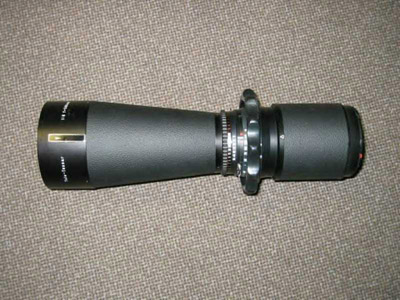However, in the interest of making full use of what would otherwise have been an overly-short day, they conducted what was called a "Stand-up EVA" before getting out of their suits and hanging their hammocks.
About two hours after landing, they donned helmets and gloves, depressurized the cabin, and opened the overhead hatch so that Dave could stand on the ascent engine cover and have a look around while Jim handled Dave's hoses and handed up cameras as needed.
106:48:27 Irwin: Okay. (Reading the checklist) "Stand on the engine cover."
........................
106:48:51 Scott: Oh boy, what a view. (Pause)
[Scott, from the 1971 Technical Debrief - "When I stood up in the top hatch, I found that, because of the one-sixth gravity, I could support myself on my elbows without having to stand on anything, and get fairly well out of the hatch."]
[Including the suit, Dave's mass is nearly 300 pounds (135 kg). However, in the one-sixth gravity, his weight is 50 pounds (23 kg).]
.............
[Jones - "One of the obvious benefits is that you had a stable platform for the 500-mm camera lens. The pictures you took of the North Complex during the SEVA are the best ones you took. You get a little better perspective from up on Hadley Delta; but, boy, the ones you took during the SEVA are nice steady images."]
[Scott - "Yup. And the 500 is another story. Again, it comes from geology. On a field trip, we asked 'why not take a telephoto of this'? 'No telephoto cameras on Apollo.' 'Well, can you put a telephoto lens on a Hasselblad?' 'Gee, I don't know. We'll look.' 'Yeah, you can, but it weighs a pound and something.' 'Well, so that?' 'Well, you can't use it on the Moon.' 'Why not?' 'Oh, you'll never be able to hold it steady on the Moon.' 'Why not?' So we spent a lot of time and energy justifying the 500-mm lens. And the final trade-off was in abort propellant. They reduced the amount of abort propellant on the landing by whatever the mass of the telephoto lens was. And Rocco Petrone (the Apollo Program Manager) made that decision. We had to push very hard to get a 500-mm lens. There was a lot of skepticism on whether it would be useful at all. And we were always pleased that it was useful. But, gosh, you go out in the field with a bunch of geologists and you can't get to the mountain and it becomes obvious that a telephoto picture is a lot better than nothing. And yeah, we got some great pictures, because it was pretty easy. You point the dude and you've got a great scene out there to take pictures of."]
[Jones - "Did you have a gunsight on yours?"]
[Scott - "The ring sight. Yeah."]
106:55:29 Irwin: When you're finished with that, Dave, I've got the 500 handy.
106:55:32 Scott: Okay. (Pause) Okay, Jim. Here's the 80 (sic; means '60').
106:55:48 Irwin: Okay. I've got it.
106:55:49 Scott: Okay. 500, now?
106:55:51 Irwin: Got it. (Long Pause)
[Dave and Jim have three 70-mm Hasselblad camera bodies, where '70-mm' refers to the film format. Two of the camera bodies are equipped with lenses of 60-mm focal length. One is loaded with black & white film and the other with color. The third camera has a 500-mm lens and is loaded with black & white film. Dave has been using the 60-mm B&W camera and has just exchanged it for the 500.]
106:56:25 Scott: Okay, Joe. I'm taking a picture now of that bright, fresh crater just to the south of the rim St. George.
[Dave takes two pictures of the crater: AS15-84-
11235
and 11236.]
106:56:42 Scott: And now over to Spur and Window, I believe.
[According to the Apollo 15 Photo Catalog, photo 11237 shows Contour Crater which is high up on the northern flank of Mt. Hadley Delta.]
106:56:44 Allen: Roger. (Pause) (Passing on a reminder from the Flight Director) And, Dave, we're coming up on 15 minutes SEVA
106:56:54 Scott: Okay. (Long Pause)
[Here, Dave is taking a 500-mm pan of Hill 305. The frames are AS15-84- 11238 to
11241.]
106:57:23 Irwin: When you finish with the 500, Dave, I have the other camera.


